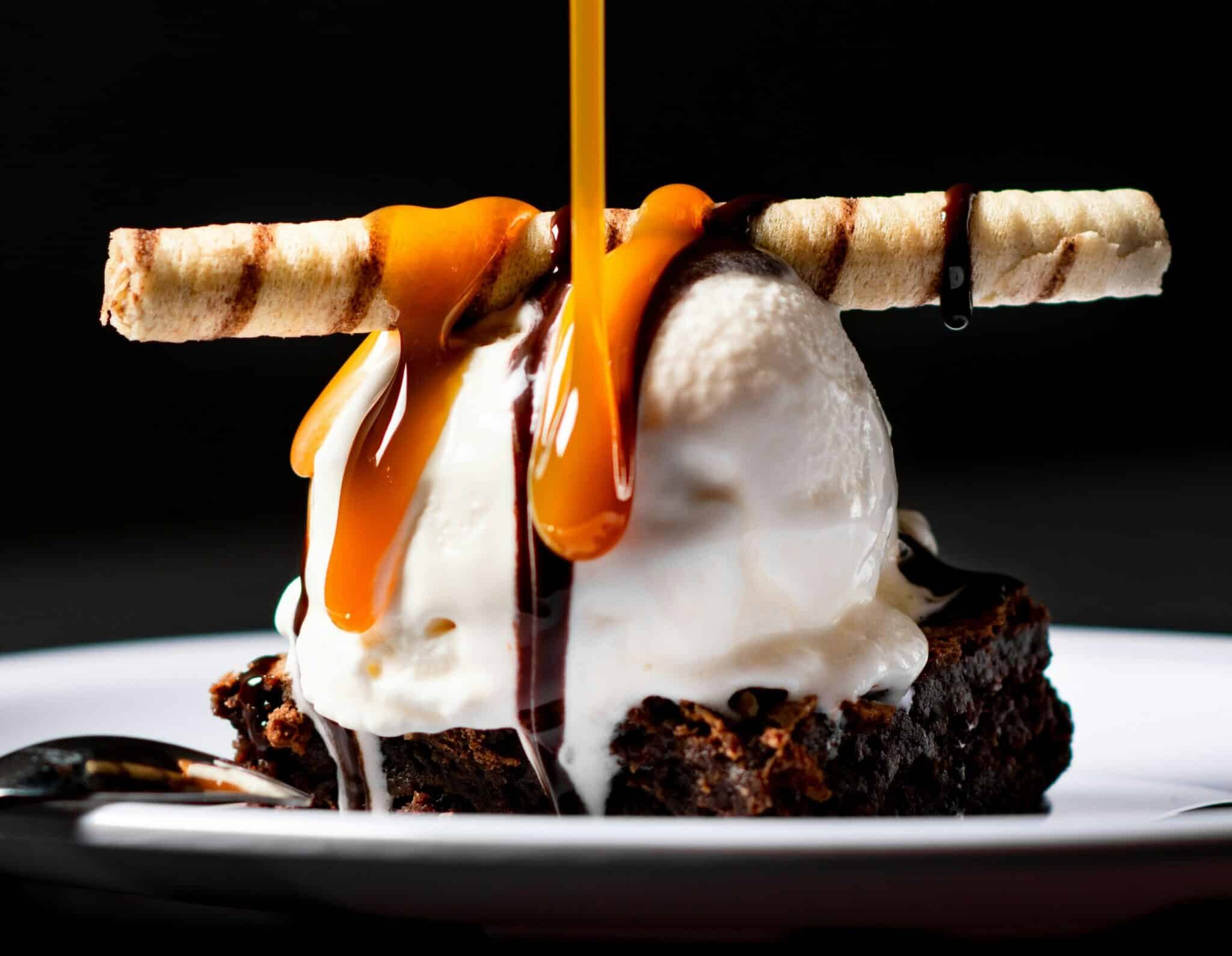Caramel vs Toffee vs Butterscotch: What’s the Difference?

The Quick Basics of Caramel vs. Toffee vs. Butterscotch
Caramel, toffee, and butterscotch—three confections that seem similar, but each has a unique twist. They’re all made from sugar and butter, but the type of sugar used, the cooking temperature, and the resulting texture set them apart. At Santa Ana Sweets, we use the highest quality ingredients and a few other tricks to make our caramels extra delicious. Unfortunately, we can’t give away our secret recipe, so this article will just cover the basics of caramel creation. One easily identified difference between caramel, toffee, and butterscotch is the candy’s hardness level. Here’s a quick overview of each organized from softest to crunchiest:
- Caramel: Made with white sugar, it has a soft, chewy, or even pourable consistency. The flavor is rich, sweet, and creamy, often enhanced with cream, vanilla, or salt.
- Butterscotch: Made with brown sugar and cooked to a lower temperature, giving it a chewy texture. Its flavor has a molasses-like richness.
- Toffee: Made with brown sugar, like butterscotch, but it’s cooked to a high temperature, which results in a brittle, crunchy texture. The flavor is buttery with a deep caramelization.
So, think of it like this:
- Caramel: Soft and sweet
- Butterscotch: Chewy and buttery
- Toffee: Hard and crunchy
Now, let’s dive a bit deeper into the more subtle distinctions of each of these sugary treats.
What is Caramel?
Caramel is a soft, sweet, and sometimes chewy golden-brown confection made with white sugar. The key to caramel lies in its ingredients and how it’s cooked.
Caramel Ingredients & Cooking Process
The base of caramel is typically white sugar, which is slowly heated with butter, milk, or cream, and sometimes a dash of vanilla or salt. The cooking temperature for caramel is higher than that of toffee or butterscotch, typically around 340°F. This results in a smooth, pourable sauce if you stop early, or a candy if you cook it longer. Caramel sauce is often used for color and flavoring in items like candies, pudding, and other food items.
Variations in Caramel Texture
Caramel can vary quite a bit in texture, depending on the amount of cream used and how long it’s cooked. Here are the three main types of caramel:
- Soft Caramel: This type is rich and smooth, thanks to its high cream content and shorter cooking time. Soft caramel can often be found inside chocolates, mixed into ice cream, or as an enhancement for other desserts.
- Chewy Caramel: With a moderate amount of cream and often a bit of corn syrup, this caramel has a stretchy, pliable texture. Here is a perfect example of where the finest ingredients make all the difference. At Santa Ana Sweets, our caramels are never made with corn syrup, creating a richer, more refined flavor.
- Hard Caramel: If you want a caramel that’s more brittle and crunchy, you’ll use less cream and cook the sugar to a higher temperature. Hard caramel is used in candies like brittles or served on its own as a hard candy.
Caramel Uses
Caramel can be used in many different ways, including:
- Caramel sauce to drizzle over cakes, ice cream, or fruit
- Pralines, where caramel is combined with nuts, usually pecans, as a delicious candy coating
- Caramel nougats, where caramel fills the centers of candy bars
What is Butterscotch?
Butterscotch is similar to caramel but with a deeper flavor thanks to the use of brown sugar and butter. It’s often cooked to a lower temperature, giving it a chewy texture, but it has a more molasses-like flavor that sets it apart.
Butterscotch Ingredients & Cooking Process
The ingredients for butterscotch are simple: brown sugar, butter, and sometimes cream or vanilla. The mixture is heated to a soft-crack stage (around 270-290°F), which allows it to become chewy.
Taste & Texture of Butterscotch
Butterscotch has a rich, buttery sweetness, with a slight molasses undertone from the brown sugar. The texture can vary, but it generally ends up chewy and smooth, similar to caramel in terms of consistency but with a deeper flavor profile.
Uses for Butterscotch
Butterscotch is incredibly versatile, often found as:
- A sauce drizzled over desserts like pies, puddings, and ice cream
- Fudge or cookies, where it’s used as a flavor base or incorporated into the dough
- Butterscotch pudding: a comforting and creamy dessert with a rich, buttery flavor
What is Toffee?
Toffee is a harder, more brittle cousin of both caramel and butterscotch. Made with brown sugar and butter, it’s cooked to a higher temperature than butterscotch, which gives it that distinctive crunch.
Ingredients & Cooking Process for Toffee
Toffee is made by combining butter, brown sugar, water, and sometimes a bit of vinegar or lemon juice for acidity. The mixture is cooked to a hard-crack stage (around 300-310°F), creating the brittle texture we associate with toffee.
Toffee Taste & Texture
Toffee is rich and buttery with a sweet, slightly caramelized flavor. The high cooking temperature causes the sugars to darken, giving it that deeper, more toasted flavor. It’s crunchy and brittle, making it an ideal treat for breaking into pieces or crumbling over desserts.
Uses for Toffee
Toffee can be added to many dishes to add a little sweetness and crunch. For example:
- Toffee bits in cookies, cakes, or brownies
- Saltine cracker toffee is a popular Christmas treat made by layering toffee over saltines and topping it with chocolate
- Sticky toffee pudding, a dessert where toffee sauce is poured over a spongy cake
What Are The Differences Between Caramel, Toffee And Butterscotch?
While all three share a base of sugar and butter, caramel, toffee, and butterscotch are uniquely defined by their cooking temperatures and textures.
- Caramel is soft and sweet, with varieties ranging from smooth sauces to chewy and hard candies.
- Butterscotch is chewy and buttery, with a rich, molasses-like flavor.
- Toffee is crunchy and brittle, with a deep caramelized sweetness.
This Article Is Making Me Hungry
Ready to stop reading about delicious treats and start eating them? Why not have a taste test at home? We recommend some toffee from another local Southern California confectioner, butterscotch, and of course, some Santa Ana Sweets caramels. Santa Ana Sweets is known for making chocolate-covered salted caramels that melt in your mouth and don’t stick to your teeth. Check out our store to get a taste of our French-inspired caramels.





